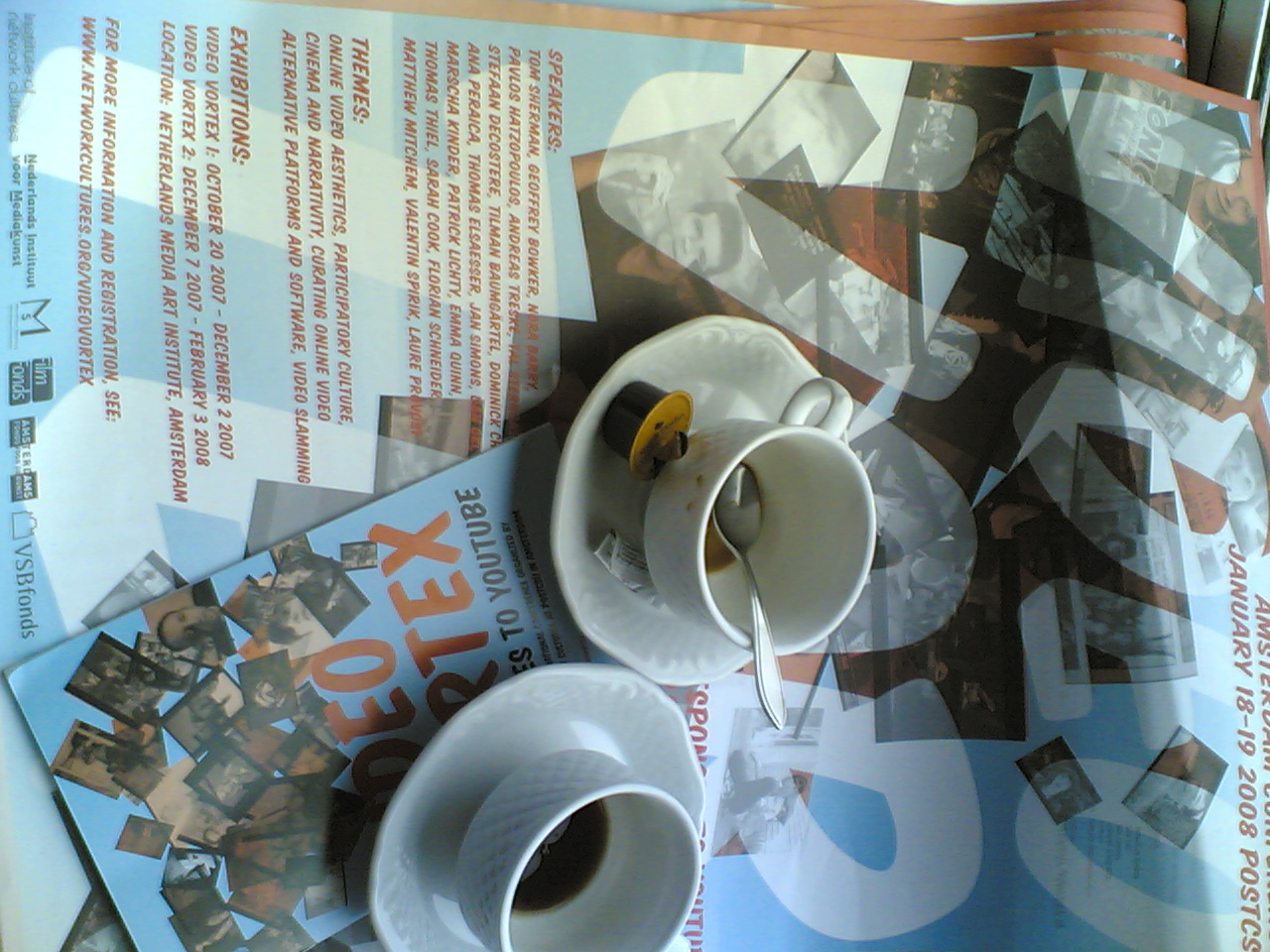Video Vortex is the new conference organised by ‘Institute for Network Cultures’ in Amsterdam.

I really enjoyed Florian Schneider’s talk, named ‘Imaginary Property’; somehow i found some connections between what he is speculating on, and the assumptions of the VirtualEntity i am currently developing.
"Property relations need to be made visible in order to be enforced. Property exists first of all as imagery and rapidly becomes a matter of imagination… What does it mean to own an image?"
Imaginary Property wants to be an alternative to the concept of Intellectual Property, by now over-used.
Images beyond control… In the age of immaterial productions relations between creators and virtual objects need to be made visible. Technology renders humans control-freaks; whereas once upon a time an image could be remembered or drawn, by the time we had systems to record, forward rewind and still, we became possessive spectators…
We have the power to halt an image. We can modulate it. Activated by physical stimula, information shows its sensitivity.
Copies are proliferating.
Another interesting observation, which i can partially object, was the following: real-time (streaming) is not a relevant concept… This useless practice can become obsolete in favour of the any-time video access.
This is obviously true.
Though, by example, i am currently working in a small team to organise the online real-time documentation of Transmediale, which consists of blogging, streaming and Irc; the idea is to create a form of interaction with the remote public, which will be able to ask questions during the conference through the chat, and possibly even … (i cannot say more than this, it is a conspiratorial set-up!).
In such a case we see a wide potential difference in these two activities: a file sitting online is off-course available whenever, still the possibilities of new media are to be explored.
Digital systems are vulnerable, thus immaterial. Infact they depend on hardware. If i break a section of a hard-drive, the entire drive is kapot! All the data stored on the object ‘drive’ can be lost. If i have an image on paper, lets say a photograph, and a corner of it gets corrupted, i can still see the picture.
The more immaterial, the more fragile…
And the object ‘drive’ which contains the image picture.jpg is not the physical instantiation of the image, it is a support containing a description of picture.jpg, which in a sense does not exist. Infact a copy, a description (in 01), and the original are just the same identical impalpable thing.
What about software, then?
I know software can be broken (like my English), or contain errors, and be functioning. But this affirmation (xname, 2008) requires a definition of error; in this case i would say a software containing errors can be described as a software that compiles and works but is not optimised, or it contains useless lines of code, is caotic, slow, not refined, not commented, or simply not very logic.
All software is experimental. It is like inventing the wheel: you cannot say whether it will work, before trying it.
It might seem highly possible, but miraculous as well.